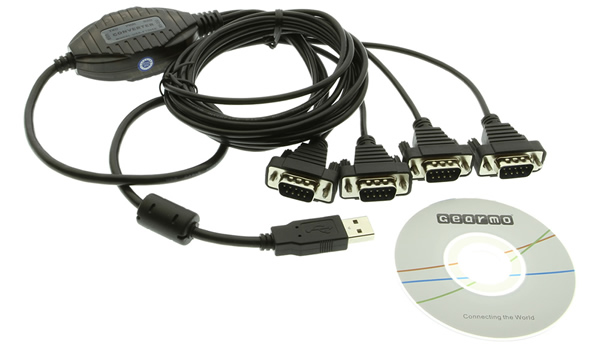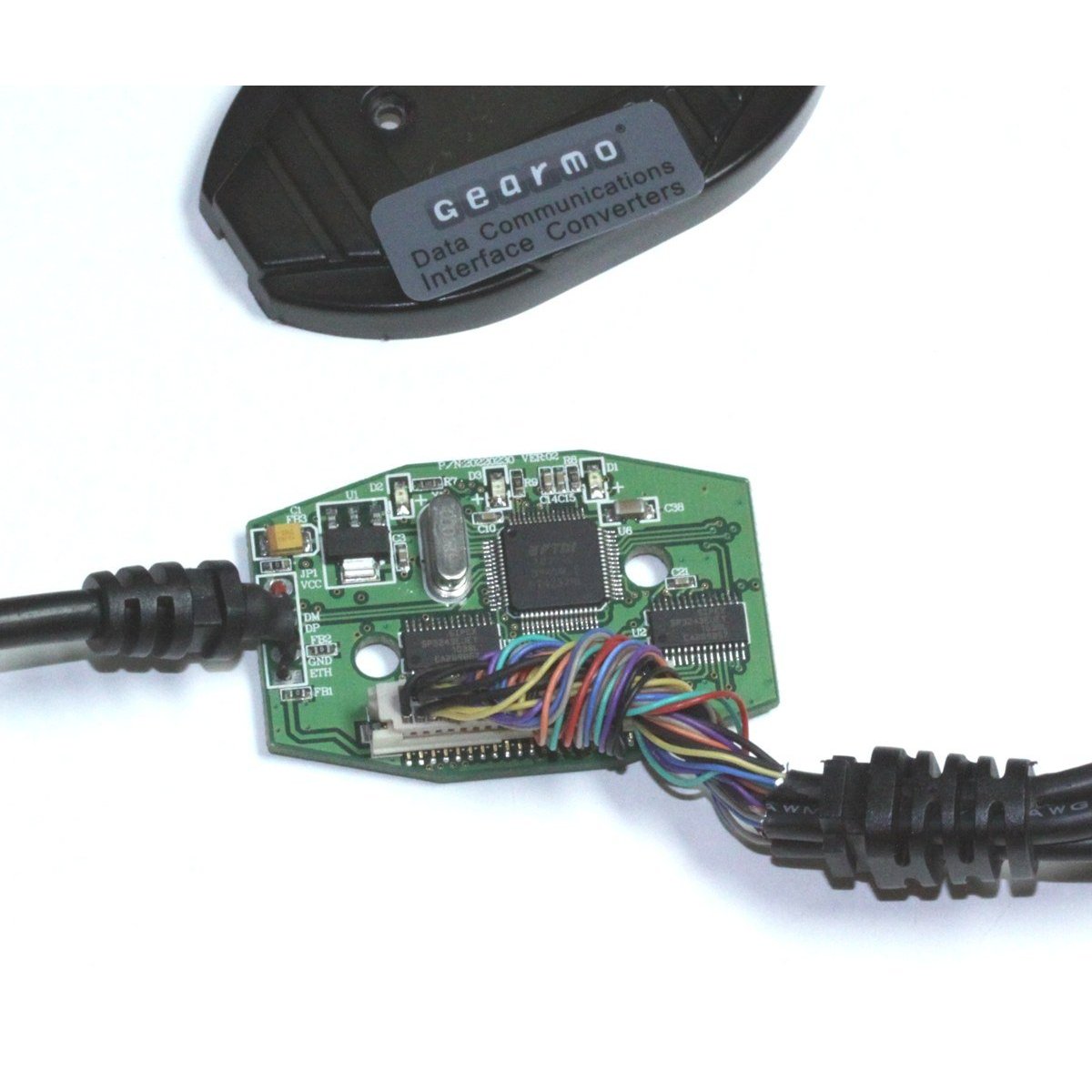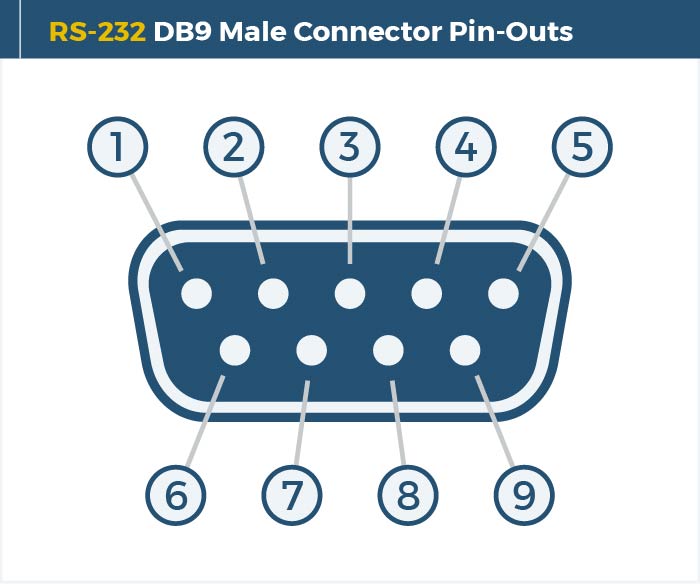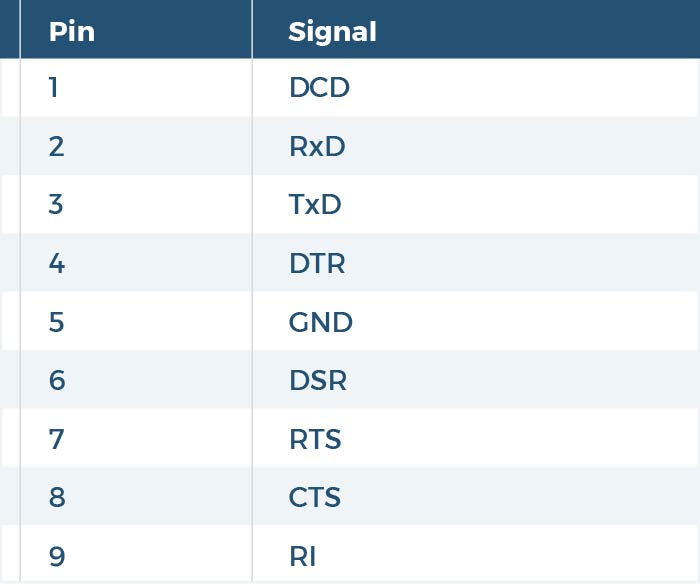Standards:
USB 2.0 Hubs
USB 3.0 (3.2 Gen 1) Hubs
USB 3.2 Gen 2 Hubs
USB Type-C Hubs
The USBG-4X2FTDI 4-Port USB DB-9 Serial Adapter is a rugged plastic USB to Serial adapter that allows you to add 4 RS-232 serial ports to your computer by connecting to a single available USB port. There are no IRQ & COM port conflicts during install.
The USBG-4X2FTDI 4-Port USB DB-9 Serial Adapter is designed to make serial port expansion as easy as possible with its Windows 11 support. Connecting to a USB port on your computer or USB hub, the USB Quad Serial Adapter instantly adds four RS-232 serial communication ports to your system. By taking advantage of the USB Bus, the 4-Port USB DB-9 Serial Adapter installation of serial ports and devices to your system painless with both Plug-and-Play and hot plug features.

Plugging the USB Quad Serial Adapter to the USB port, the adapter is automatically detected and installed. There are no IRQ & COM port conflicts, since the ports do not require any additional IRQ, DMA, memory as resources on the system. The USB Quad Serial Adapter is self-powered and does not require any external power adapters.

The 4-Port USB DB-9 Serial Adapter provides instant connectivity with modems, ISDN TAs, PDAs, handheld & pocket PCs, digital cameras, POS, serial printers. It is suitable for remote access, retail and industrial applications, data collection and other applications requiring high speed RS-232 serial communication ports.
Additional Features:
OS Support:
| Compliance |
| ||||||||||||||||||
|---|---|---|---|---|---|---|---|---|---|---|---|---|---|---|---|---|---|---|---|
| Physical Characteristics |
| ||||||||||||||||||
| Serial Attributes |
| ||||||||||||||||||
| Software |
| ||||||||||||||||||
| Environmental |
| ||||||||||||||||||
| Product Information |
| ||||||||||||||||||
| Hardware |
| ||||||||||||||||||
| Other Data |
|


The 4-Port USB DB-9 Serial Adapter has certain accessories that work with it. These accessories are what you can order if needed.
Model# 9DBMF5FT
$2.99In stock
View frequently asked product questions below. For all serial troubleshooting, visit this page.
Still need help? Reach out!
Test your components by:
When testing cables:
When testing serial ports and devices:
Note: You are required to restart your computer after disabling the Driver Signature Enforcement. Save all open work on your computer.
Disable driver signature enforcement:
When your system restarts:
When your computer restarts, Driver Signature Enforcement will be disabled and you can install the drivers.
Note: You are required to restart your computer after disabling the Driver Signature Enforcement. Save all open work on your computer.
Disable Driver Signature Enforcement:
After your computer restarts:
When your computer restarts, Driver Signature Enforcement will be disabled and you can install the drivers.
Once the driver/software is installed, follow these steps to allow the software:
Dennis –
This USB-to-Serial adapter is SO much better than the Prolific one I have for another device. The instructions are too brief for a non-computer person, but sufficient. I’ve been using it for a month now to connect a ham radio’s sound card and a TV tuner without a problem. Definitively recommended.
Charles –
One killer feature: in linux, the serial ports enumerate in order. No more guessing which of your serial devices is /dev/ttyUSB?!
GT Rider “AP” –
This cable is essential for Windows 8 users who need RS-232 serial ports for legacy hardware interfaces. In general, I have found this adapter to be a reliable addition to my Windows 8 system where I have multiple RS-232 serial devices that I use regularly.
Information for Amateur Radio Operators:
I use this cable to convert one USB 3.0 port on my late 2013 iMac (OS X 10.9.x Mavericks, Windows 8.1 Professional 64-bit) to 4 RS-232 serial ports to which I have connected my amateur radio transceivers, an auto tuner and a Kenwood TH-F6A programming cable. I used to have a USB to 4-port adapter made by another, well-known manufacturer that had the Prolific chipset, which is not compatible with Windows 8.
This is what I like about this adapter: It worked immediately in Mac OS X 10.9 and Windows 8.1 without needing to run any driver updates to configure the ports. Port conflicts are non-existent even when I have my SignaLink USB digital interface and MasterKeyer MK-1 in use. Where I used to have problems getting the correct rig information from a Yaesu FT-100D in my logging program, I no longer have that issue. I couldn’t have asked for an easier, pain-free setup experience.
Now for a nit to pick: I question the need for the dongle style adapter cable/serial ports. Since I use this in an amateur radio environment, shielding and reduction of RF overload is very important. This cable can be susceptible to RF interference that I suspect is caused by the long runs of cable with insufficient shielding between the USB port and serial port connectors. This is also the reason why I stopped short of giving this cable a 5 star rating. I will try the usual mitigation steps – install chokes, go over grounding system again – and see if that makes a difference. Otherwise, I may be limited to operation on all bands 20m and down if I want to use the rig control interface of my logging and contest software.
Bob –
In short, the GearMo 4-port serial adapter ROCKS!
I am a professional network engineer and often need to connect to serial console ports on routers, switches, firewalls and more. An RS232 serial connection is pretty much the industry standard for a local console connection to these devices. Since it’s common for me to be working on several devices at once — often trying to make coordinated changes on 2 or 4 devices that must be executed with relatively precise timing — this product seemed like a better option than moving my console cable back and forth between devices.
The 36″ cables are a bit bulky when coiled up but the spare length for connections is great when working in a data center rack. The FTDI chipset retains its COM port assignment on Windows after reboots and regardless of which USB port the adapter is connected to — an enormous improvement over the PL2303 chipset which always changes its COM port assignment. Each RS232 port is embossed with a number (1-4) that indicates which port it is. I mapped these to COM11-14 on my system so I could make an easy mental association with the COM port to the physical connector.
This item also works reliably in Mac and Linux OSes. I’ve been strongly considering building a battery-powered RaspberryPi terminal server with one or two of these to provide an easy-to-access WiFi-connected terminal server.
W4JLE –
I guess you get what you pay for, this was more than similar items found on auction sites cheaper. The big difference is this one works!. As a ham radio operator we have all lamented the loss of the once ubiquitous serial port. While there are a bunch of cheap Chinese cables they used cloned chips that may or may not work with drivers and software. I plugged this in, installed the drivers and it assigned 16, 17,18 and 19 as serial ports. I am running a Navigator interface that uses a number of ports below that. I could have reassigned any of them via the control panel but left them as is. I Have a serial to CT converter for my Icom on 16, a Harris modem on 17, a GPS disciplined Oscillator on 18 and a homebrew antenna patch panel on 19 and they all work with all my various software. HRD, MARS ALE, Comm terminal, 110A both hardware via the Harris and Software. ETC. I am no longer tearing my hair out every time a windows update reboots me! What a difference real FTDI chips and non Chinese bootleg drivers makes.- Fred W4JLE